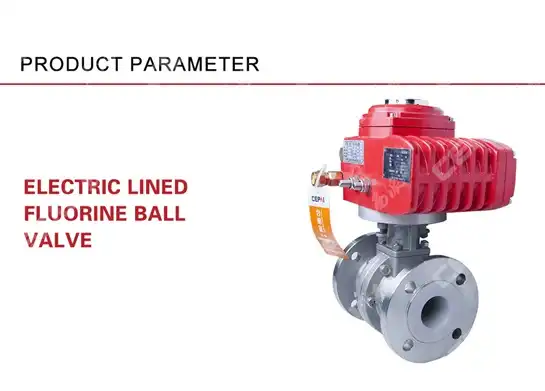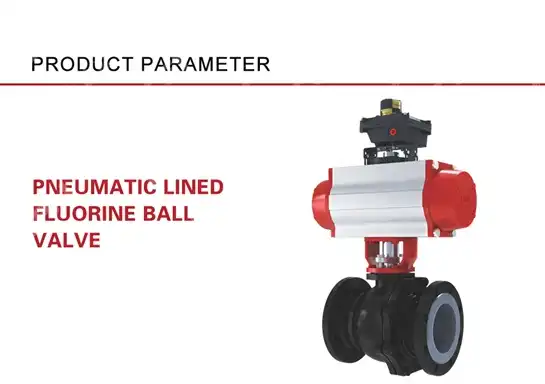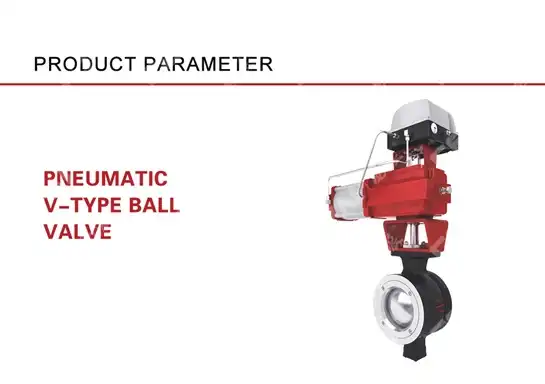Tips for Selecting the Right Ball Valve for High-Pressure Resistance
When faced with system failures, leakages, or unexpected shutdowns in high-pressure applications, the root cause often traces back to inadequate valve selection. Industrial facilities operating under extreme pressure conditions demand precision-engineered solutions that can withstand operational stresses while maintaining reliable performance. High-Pressure Ball Valve selection becomes critical when your system's integrity, safety, and operational efficiency depend on components that must perform flawlessly under demanding conditions. This comprehensive guide addresses the essential considerations for selecting ball valves specifically designed for high-pressure resistance, helping engineers and procurement professionals make informed decisions that prevent costly downtime and ensure long-term system reliability.

Understanding High-Pressure Ball Valve Requirements
The foundation of successful high-pressure valve selection begins with thoroughly understanding your system's operational parameters and performance requirements. High-Pressure Ball Valve applications typically involve pressures exceeding 1000 PSI, where standard valves would fail catastrophically. These demanding environments require valves engineered with enhanced structural integrity, advanced sealing mechanisms, and materials specifically chosen for their strength-to-weight ratio and corrosion resistance properties. When evaluating High-Pressure Ball Valve requirements, engineers must consider not only the maximum operating pressure but also pressure cycling, temperature fluctuations, and the chemical composition of the media being controlled. High Pressure Pneumatic O-type Ball Valve designs have emerged as particularly effective solutions because they combine pneumatic actuation convenience with robust construction capable of handling extreme pressures. The O-type ball configuration provides full-bore flow characteristics while maintaining structural strength necessary for high-pressure applications. The selection process must also account for safety factors, regulatory compliance requirements, and long-term operational costs. High-pressure systems demand valves that can maintain their sealing integrity throughout thousands of operating cycles while resisting wear from abrasive media or corrosive environments. Understanding these fundamental requirements establishes the groundwork for making informed valve selection decisions that ensure both immediate performance and long-term reliability.
-
Critical Performance Parameters
Operating pressure rating represents the most fundamental parameter when selecting High-Pressure Ball Valve components, but it should never be considered in isolation. The valve's pressure rating must exceed your system's maximum operating pressure by an appropriate safety margin, typically 25-50% depending on application criticality and industry standards. However, temperature effects on pressure ratings create additional complexity, as most valve pressure ratings decrease as operating temperatures increase. Flow characteristics become equally important in high-pressure applications, where pressure drop across the valve can significantly impact system efficiency and downstream equipment performance. High Pressure Pneumatic O-type Ball Valve designs excel in this regard because their full-port configuration minimizes flow restrictions and associated pressure losses. The ball's O-shaped geometry provides smooth flow paths that reduce turbulence and minimize energy losses, making these valves particularly suitable for high-pressure systems where efficiency is paramount. Cycling frequency and response time requirements also influence valve selection decisions. High-pressure pneumatic actuators must generate sufficient force to operate the valve against system pressure while maintaining quick response times when rapid shut-off is required. The actuator sizing calculations become more complex in high-pressure applications because the differential pressure across the valve creates higher torque requirements that must be overcome by the pneumatic actuator system.
Material Selection for High-Pressure Applications
Material selection forms the cornerstone of High-Pressure Ball Valve performance and longevity, directly impacting the valve's ability to withstand extreme pressures while maintaining structural integrity throughout its service life. The valve body material must possess sufficient tensile strength, yield strength, and fatigue resistance to handle repeated pressure cycling without developing stress concentrations that could lead to catastrophic failure. Stainless steel grades, particularly 316L and 304L, have become industry standards for High-Pressure Ball Valve bodies due to their excellent combination of mechanical properties and corrosion resistance. These materials offer superior strength-to-weight ratios while maintaining their structural integrity under extreme pressure conditions. Carbon steel options, including WCB (Water, Gas, Oil) grades, provide exceptional strength characteristics for high-pressure applications where corrosion resistance requirements are less stringent. The ball and seat materials require careful consideration because they directly impact sealing performance and operational longevity. High Pressure Pneumatic O-type Ball Valve designs typically employ hardened stainless steel balls with precision-machined surfaces that maintain their spherical geometry under high-pressure conditions. The seat materials, whether soft polymer seals or metal seats, must be selected based on the operating temperature range, chemical compatibility with the process media, and expected service life requirements.
-
Advanced Metallurgy Considerations
High-pressure applications often require specialized metallurgical treatments to enhance material properties beyond what standard grades can provide. Heat treatment processes, including quenching and tempering, can significantly improve the mechanical properties of valve components, increasing their ultimate tensile strength and fatigue resistance. These treatments become particularly important in High-Pressure Ball Valve applications where components experience high stress concentrations around bolt holes, seat interfaces, and other critical areas. Corrosion-resistant alloys (CRAs) represent another important category of materials for specialized high-pressure applications. Alloys such as Inconel, Hastelloy, and duplex stainless steels offer superior performance in aggressive chemical environments while maintaining the mechanical strength necessary for high-pressure service. These materials command premium prices but provide exceptional value in applications where standard materials would fail prematurely due to corrosion-assisted cracking or general degradation. Surface treatment technologies, including nitriding, carburizing, and various coating systems, can enhance the performance characteristics of High Pressure Pneumatic O-type Ball Valve components. These treatments improve wear resistance, reduce friction coefficients, and provide additional protection against corrosive attack. The selection of appropriate surface treatments depends on the specific operating conditions and expected service life requirements of the valve installation.
Sealing Technology and Design Features
The sealing system represents the most critical aspect of High-Pressure Ball Valve design, as seal failure typically represents the primary failure mode in high-pressure applications. Traditional elastomeric seals often prove inadequate for extreme pressure applications due to extrusion, compression set, and temperature limitations. Advanced sealing technologies have evolved to address these challenges through innovative design approaches and advanced materials. High Pressure Pneumatic O-type Ball Valve designs incorporate sophisticated sealing mechanisms that combine the flexibility of elastomeric materials with the durability of metallic components. Primary seals, typically manufactured from PTFE, RPTFE, or PEEK materials, provide the main sealing interface while being supported by metallic backup rings that prevent extrusion under high-pressure conditions. This dual-sealing approach ensures reliable performance across wide pressure and temperature ranges. The valve's fire-safe design capabilities become particularly important in high-pressure applications where catastrophic failure could result in significant safety hazards. Fire-safe designs incorporate metallic secondary seals that engage automatically when the primary elastomeric seals are damaged by fire or extreme temperatures. These backup sealing systems ensure that the valve maintains some degree of sealing capability even under emergency conditions, potentially preventing catastrophic releases that could endanger personnel or equipment.
-
Innovative Sealing Solutions
Spring-loaded sealing systems have emerged as particularly effective solutions for High-Pressure Ball Valve applications where maintaining constant sealing force is critical. These systems automatically compensate for thermal expansion, seal wear, and pressure fluctuations by maintaining consistent contact pressure between sealing surfaces. The spring loading mechanism ensures that sealing force increases proportionally with system pressure, providing enhanced sealing performance under extreme conditions. Graphite-based sealing systems offer exceptional performance in high-temperature, high-pressure applications where traditional elastomeric seals cannot survive. Flexible graphite seals maintain their sealing properties at temperatures exceeding 400°C while providing excellent chemical compatibility with most process media. These seals are particularly valuable in High Pressure Pneumatic O-type Ball Valve applications involving steam, hydrocarbons, or other high-temperature fluids. Metal-to-metal sealing technology represents the ultimate solution for extreme pressure applications where no organic sealing materials can survive. These systems require precise machining tolerances and specialized surface treatments to achieve reliable sealing performance. While more expensive than soft-sealed alternatives, metal-sealed High-Pressure Ball Valve designs provide unmatched durability and temperature resistance for the most demanding applications.

Actuator Selection and Integration
Pneumatic actuator selection for High-Pressure Ball Valve applications requires careful analysis of the torque requirements, response time specifications, and fail-safe operational requirements. High-pressure applications generate significantly higher operating torques due to increased differential pressures across the valve ball, requiring actuators with correspondingly higher torque output capabilities. The actuator must also provide sufficient reserve torque capacity to handle emergency shutdown scenarios where full system pressure may be applied across the valve. High Pressure Pneumatic O-type Ball Valve systems typically employ double-acting pneumatic actuators that provide positive closing and opening forces, ensuring reliable operation regardless of pressure conditions. These actuators incorporate internal springs or other fail-safe mechanisms that position the valve in a predetermined safe position upon loss of pneumatic supply pressure. The fail-safe configuration (fail-open or fail-closed) must be carefully selected based on process safety requirements and downstream equipment protection needs. The pneumatic supply system design significantly impacts overall valve performance and reliability. High-pressure valve actuators require clean, dry compressed air at sufficient pressure levels to overcome the increased torque requirements. Air filtration, regulation, and lubrication (FRL) systems become particularly important in high-pressure applications where contamination or inadequate lubrication could lead to actuator failure and subsequent process disruption.
-
Advanced Actuation Technologies
Smart actuator technologies have revolutionized High-Pressure Ball Valve control and monitoring capabilities. Digital positioners provide precise valve position control while offering diagnostic capabilities that can detect impending component failures before they result in operational disruptions. These systems monitor actuator air consumption, valve position feedback, and operating pressures to provide early warning of seal wear, actuator degradation, or other developing problems. Explosion-proof actuator designs become mandatory in many high-pressure applications involving flammable or explosive atmospheres. These actuators incorporate specialized enclosures, cable entry systems, and safety barriers that prevent ignition sources from reaching potentially explosive atmospheres. The certification requirements for explosion-proof equipment vary by geographical region and specific application requirements, making proper selection critical for regulatory compliance. Remote monitoring and control capabilities have become increasingly important in High Pressure Pneumatic O-type Ball Valve installations. Fieldbus communication protocols, wireless monitoring systems, and cloud-based analytics platforms enable operators to monitor valve performance, predict maintenance requirements, and optimize operational parameters from centralized control locations. These technologies provide significant value in high-pressure applications where direct access to valve installations may be limited or hazardous.
Installation and Maintenance Considerations
Proper installation procedures are fundamental to achieving reliable performance from High-Pressure Ball Valve installations. Installation errors, including improper torque specifications, inadequate pipe support, or contamination introduction, can compromise valve performance and lead to premature failure. High-pressure applications are particularly sensitive to installation quality because operating stresses amplify the effects of installation defects. Pipe stress analysis becomes critical in high-pressure valve installations because thermal expansion, vibration, and pressure-induced pipe movement can impose significant loads on valve bodies. Proper pipe support design and expansion joint placement help minimize these loads, extending valve service life and maintaining sealing integrity. The valve installation orientation also affects performance, with some High Pressure Pneumatic O-type Ball Valve designs requiring specific mounting orientations to ensure proper drainage and prevent seal damage. Preventive maintenance programs tailored to high-pressure applications help maximize valve reliability and service life. These programs typically include regular seal inspections, actuator lubrication, position calibration, and performance testing. High-pressure valves require more frequent maintenance intervals due to the increased stresses and wear rates associated with extreme operating conditions. Predictive maintenance technologies, including vibration monitoring, thermal imaging, and acoustic emission testing, can identify developing problems before they result in costly failures.
-
Maintenance Best Practices
Seal replacement procedures in High-Pressure Ball Valve applications require specialized tools, techniques, and safety precautions. The high-energy potential stored in pressurized systems creates significant safety hazards during maintenance activities, requiring comprehensive lock-out/tag-out procedures and pressure relief verification before beginning work. Specialized seal installation tools help ensure proper seal placement and prevent damage during assembly. Actuator maintenance in high-pressure applications focuses on ensuring adequate lubrication, proper air supply quality, and reliable position feedback systems. Pneumatic actuators operating high-pressure valves experience higher loads and accelerated wear rates, requiring more frequent lubrication and component replacement intervals. Air quality becomes particularly critical because contamination can cause actuator seizure or erratic operation when combined with high operating loads. Performance trending and documentation provide valuable insights into High Pressure Pneumatic O-type Ball Valve degradation patterns and optimal maintenance timing. Systematic recording of operating pressures, position response times, and maintenance activities helps identify performance trends that can guide maintenance scheduling and component replacement decisions. This data becomes particularly valuable for optimizing maintenance costs while maintaining required reliability levels in critical applications.
Conclusion
Selecting the appropriate High-Pressure Ball Valve requires comprehensive evaluation of operating parameters, material compatibility, sealing technology, and actuator integration requirements. Success depends on understanding the complex interactions between pressure ratings, temperature effects, and long-term reliability expectations while balancing initial costs against lifecycle performance requirements.
Cooperate with CEPAI Group Co., LTD.
As a leading China High-Pressure Ball Valve manufacturer and China High-Pressure Ball Valve supplier, CEPAI Group Co., LTD. brings over fifteen years of specialized experience in high-pressure valve design and manufacturing. Our national high-tech enterprise status, combined with Jiangsu Smart Factory certification and comprehensive quality management systems, ensures that every High Quality High-Pressure Ball Valve meets the most stringent international standards including API, CE, and ISO certifications.
Our intelligent manufacturing capabilities, featuring the Asia Pacific region's longest high-precision production line, enable us to deliver China High-Pressure Ball Valve wholesale solutions with unprecedented quality consistency and competitive High-Pressure Ball Valve price structures. With supplier qualifications from major industry leaders including PetroChina, Sinopec, and CNOOC, our High-Pressure Ball Valve for sale represents proven performance in the world's most demanding applications. Contact our technical experts at cepai@cepai.com to discuss your high-pressure valve requirements and discover why leading companies worldwide trust CEPAI for their critical fluid control solutions.
FAQ
Q: What pressure rating should I specify for my high-pressure ball valve application?
A: Select a valve pressure rating that exceeds your maximum operating pressure by 25-50%, considering temperature derating effects and safety factors required by applicable codes.
Q: How do I determine the correct actuator size for high-pressure ball valve applications?
A: Calculate required torque based on differential pressure, valve size, and safety factors, then select an actuator with 25-50% additional torque capacity for reliable operation.
Q: What materials are best for high-pressure ball valve bodies and trim components?
A: Stainless steel 316L or carbon steel WCB for bodies, with hardened stainless steel balls and PTFE or metal seats depending on temperature and chemical compatibility requirements.
Q: How often should high-pressure ball valves undergo maintenance inspection?
A: Implement quarterly visual inspections with annual detailed maintenance, adjusting frequency based on operating severity, cycling rates, and performance trending data.
References
1. "High Pressure Valve Design and Selection Criteria" - American Society of Mechanical Engineers (ASME), Valve Standards Committee
2. "Materials Selection for High-Pressure Fluid Control Applications" - American Petroleum Institute (API), Technical Committee on Valves
3. "Pneumatic Actuator Sizing for High-Pressure Ball Valve Applications" - Instrument Society of America (ISA), Control Valves Section
4. "Sealing Technology for Extreme Pressure and Temperature Applications" - Fluid Sealing Association (FSA), Technical Standards Board

Get professional pre-sales technical consultation and valve selection services, customized solution services.

About CEPAI


